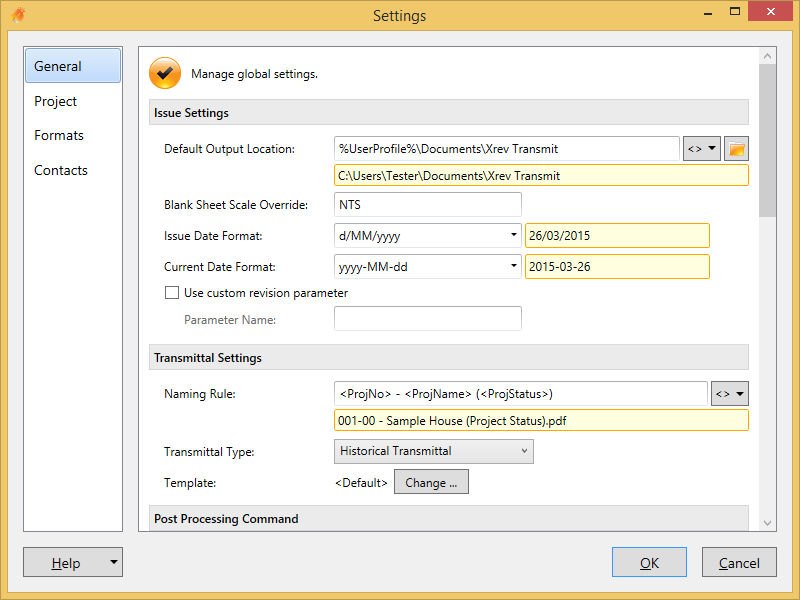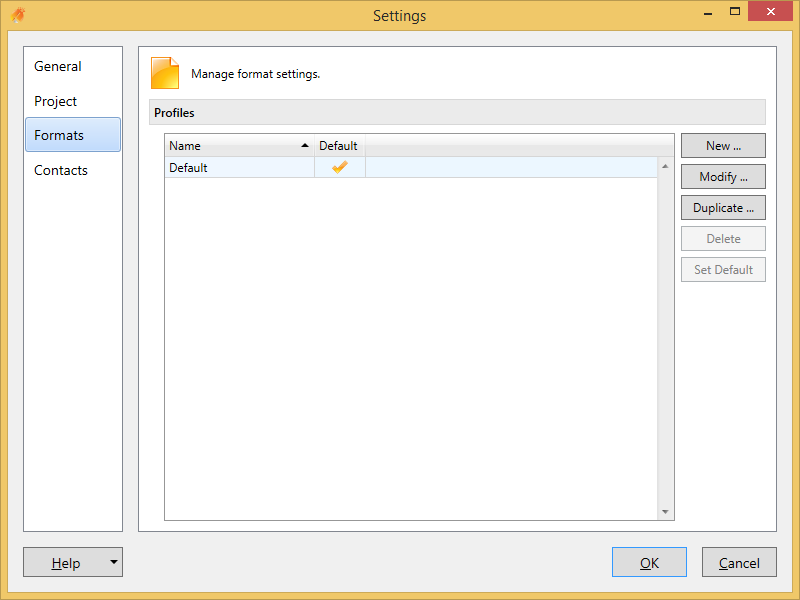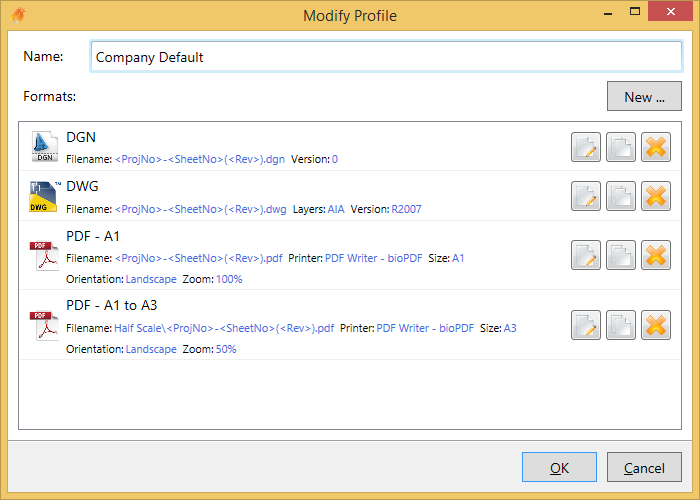Customizing Settings
Overview
This guide will walk through customizing Xrev Transmit's settings to conform with your company standards.
1. Open the Settings dialog
Open Revit and open a project, then go to the Add-Ins tab on the ribbon and click the Settings button in the Xrev Transmit panel.
This will display the Settings dialog:
The General settings section allows you to manage global settings that apply to all projects.
2. Set the Default Output Location
The first item to setup is the Default Output Location. This is the base directory of where you want files to be output to when doing your sheet / drawing issues. By clicking the Browse button you can navigate to the folder you wish the files to always go to. However, you can be clever about it! By clicking you can use parameter information from Revit and substitute out folder names that match with Revit parameters. You can even have the formats append to this output location to place different formats (DWG's, PDF's) into their own folders. See Output Locations and Naming Rules for more information.
Here is an example of a parametric output location (this way is doesn't matter what project your work on, you never have to change this setting!):
3. Setup Transmittal
The next important section is the Transmittal Type and the Template it's using as well as the Naming Rule required. There are 3 different Transmittal Types you can have; Historical, Single & MS Word Single. The former 2 use the built in Report Designer for the transmittal customization which gets stored in the database and the latter uses a Microsoft Word document (.docx) file. See Transmittal Settings for more information.
4. Issue Methods, Reasons, Format Types & Paper Sizes
These sections allow further customization of the details that appear in the user interface and on the generated transmittal documents in order to align with your own standards. See Issue Methods, Issue Reasons, Format Types & Paper Sizes for more information.
5. Setup Formats
The last important area to setup is your Format requirements and Profiles. Select the Formats section in the list on the left.
You can see that it is possible to setup multiple Profiles. These Profiles are groups of output formats. You may have a Profile for the office, a Profile for particular clients or even Profiles for specific projects depending on their exact requirements. The Default Profile is the one that is automatically selected in the Print & Export Wizard. Choose Modify or double click on the Profile in order to edit it.
This opens a new window displaying the Profile Name and all the Formats it includes. Generally we suggest renaming the default profile to be more specific to your company. This way you know that you have customized it to suit your office standards. IE: In our case it would be “Xrev Default”.
You can delete unwanted formats from this profile, edit them to suit your office standards as needed or duplicate them to create a slightly different version. You can also add new formats using the button.
For each Format you can see a preview of the most important settings like the naming rule and paper size to help you identify the differences at a glance.
The settings generally match those that are within the Revit Print and Export menus, with the exception of the Naming Rule fields. Again by using the menu you can add parameters from Revit to format the actual naming of the files.
Here is an example of a PDF Naming Rule. In this case all the PDFs would get placed in a PDF subfolder within the Default Output Location:
See Formats and Profiles, the Profile dialog and the Format dialog for more information.
Finish setting up all your Formats to your requirements and then click OK to save them. Xrev Transmit is now setup for you to issue sheets / drawings with!








